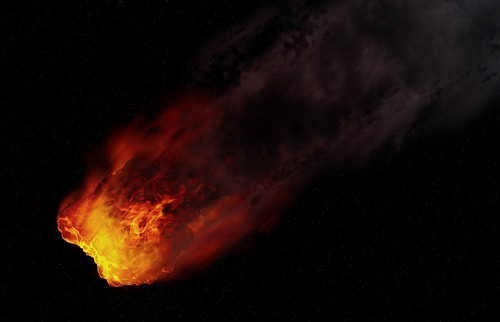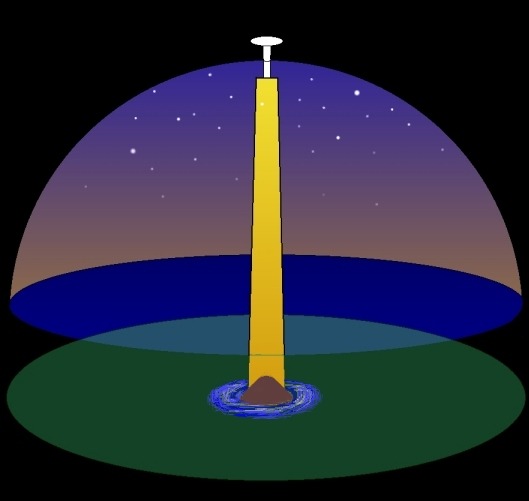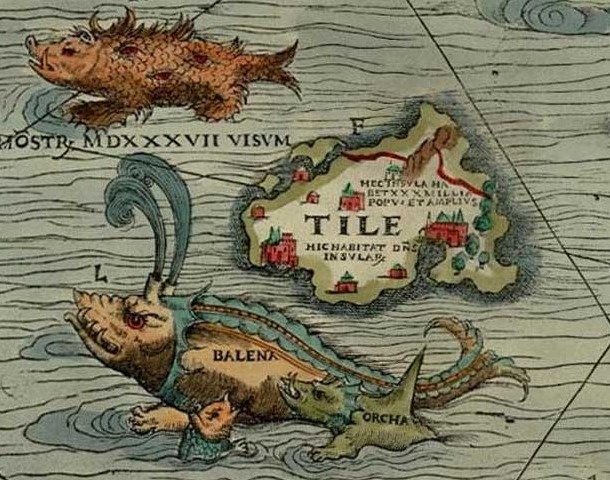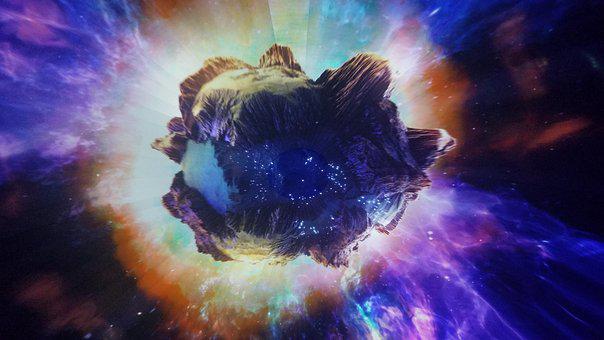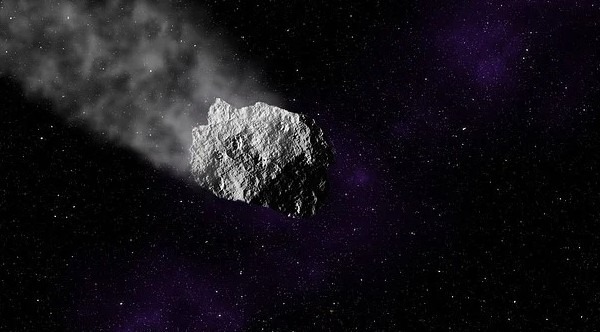Kaali Crater Field is not one but a group of nine meteorite craters. It is located in the town of Kaali on the Estonian Island of Saaremaa which is 11 miles away from the island capital. The impact crater site consists of one large crater along with 8 smaller craters. The formation of the Kaali Crater Field is estimated to be after 1530 – 1549 BCE. It is one of the impact craters that occurred in the populated area.
Prior to the 1930s, there were several hypotheses about the origin of the crater. One of the theories suggested that it was a volcanic crater. However, it has been declared an impact crater in the later years. It was declared as an impact crater due to meteorite, asteroid, or comet in 1928, 1933, and 1937 by Ivan Reinvald.
Formation of Kaali Crater Field
The impact is believed to have occurred around 3,500 years ago during the Holocene period. According to different researchers, the age estimates of the Kaali impact crater vary up to 6,000 years such as ~6,400 to ~400 years before the present BCE era. However, analysis of silicate spherules in Estonian marshes shows that the possible age of the Kaali impact crater could be around 7,600 years old.
Another study conducted on a high infrared signal in a nearby swamp suggested a much younger age of Kaali Crater Field. It was estimated that a comet in our solar system made an impact on Earth’s surface in the 4th century. The impact craters were formed on the Earth’s surface with an estimated impact velocity between 22,000 and 45,000 mph (36,000 and 72,000 km/h). Furthermore, it is estimated that the meteorite weighed 20 to 80 metric tons.
According to some researchers, the meteorite was traveling from the northeast side when it hit Estonia’s land area. Kaali Crater Field is known for 9 impact craters at the same location. It is because at an altitude of 5 to 10 km (20,000-30,000 feet) the meteor broke into pieces and fell to earth in fragments. The largest crater formed an impact crater with a diameter of 110 m (360 feet) and a depth of 22m (72 feet).
During an impact formed by the meteor, the explosion removed approximately 2,900,000 cubic feet (81,000 m3) of rocks and dolomite. The impact formed an extremely hot gas stream that went 7 to 8 km (20,000 to 30,000 feet) high. Due to the impact crater’s effects, vegetation was burnt up to 3.7 miles (6 km) from the impact site.
Lake Kaali
Lake Kaali lies at the bottom of the crater. Unlike other craters on earth such as Lonar Crater, the other small eight craters are associated with the bombardment. The small impact craters have a diameter ranging from 12 to 40 m (39 to 131 feet). These small impact craters have a depth ranging from 1 to 4 meters (3.3 to 13.1 feet). However, the 8 small impact craters are located within 0.62 miles (1 km) of the main impact crater.
Effects of Kaali Crater Field
According to the most recent theory regarding the Kaali impact crater, Estonia was in the Nordic Bronze Age and had a small human population with forestation. During impact, the meteor produced energy of about 20 kilotons of TNT (80 TJ). It is equal to the energy produced during the Hiroshima bomb explosion and as a result, it burned forests within a radius of 3.7 miles (6 km).
Mythology About Kaali Crater Field
Karl Kello, a scholar argues that the event figured prominently in regional mythology. According to archaeological evidence, the impact crater site was a ritual sacrifice site. During the Early Iron Age, the lake was surrounded by a stone wall that was 470 m (1,540 feet) long, with an average width of approximately 2.5 m (8.2 feet) and 2.0 m (6.6 ft) high.
Finnish mythology, on the other hand, has stories that originated from the formation of Kaali Field Craters. One of them is found in runes 47, 48, and 49 of the Kalevala epics: Louhi, the evil magician, steals the Sun and Fire from people causing complete darkness. Ukko, the sky god, orders a new sun to be made from a spark. The Air Maiden begins to make a new sun, but the sparks fall from the sky to the ground. This spark goes to Kalevan or Aluen lake and causes the water to rise.
The Finnish heroes saw the fireball falling somewhere behind the Neva River, a direction of Estonia from Karelia. The heroes head in that direction to seek fire, eventually picking up flames from a forest fire.
Theory by Lennart Meri
According to a theory proposed by Lennart Meri, Saaremaa has been the legendary island of Thule. It was first mentioned by Pytheas, an ancient Greek geographer. However, the name Thule has been linked to the Tule, a Finnish word that means fire. Kaali was considered to be the place where the sun rested.
Cultural Significance of Kaali Crater Field
Ragnarok
With the new geological data, there seems to be a logical reason to trace the origin of the Norse tales of Ragnarok, the Midgard Serpent, the Wolf of Fenris, and the Giant of Surt to the experiences of people in the Bronze Age at about 1200 BC.
Norse Mythology, also known as Asa Creed, includes the stories about the apocalypse of Ragnarok, the Wolf of Fenris, and the Midgard Serpent which is attributed to the Viking period of the 6th century AD or late Iron Age. However, the origin of the mythology can go back much further in time.
The Tale of the Fenris Wolf tells the story of a giant wolf who threatened to destroy the Earth and was chained deep in the mountains. When it howled, the earth and the mountains shook violently with deep fractures formed and rocks were thrown away from the impact crater site.
Therefore, the story of the Fenris Wolf seems to have a logical explanation for the strong seismic activity in Sweden at the end of the Holocene period. Additionally, several place names refer to the fractured bedrock or sounds. However, the tales of Fenris Wolf and Ragnarok date back to ancient traumatic experiences of nature.
Scientific Significance of Kaali Crater Field
When it comes to calculating the age of Kaali Crater Field, there has been a dispute between scientists and researchers just like other craters on earth such as Wolfe Creek Crater. The investigation continues but there are no signs of a solution if Kaali Crater Field is 4,000 or 7,500 years old. Even with the latest testing equipment, scientists have not yet come to a final age of Kaali Crater Field.
In 1927, Ivan Reinwald, the pioneer researcher of Kaali Crater Field found evidence that the craters were formed because of a meteorite hitting the earth’s surface. However, it took him a decade to search for the first meteorite fragments to prove it as an impact crater rather than a volcanic crater or the stories that come from legends.
Evidence About Kaali Crater Field
As geologists work out the question of when the meteorite struck, archaeologists are trying to interpret the oddities discovered from the site. In the 1970s, excavations started and brought many interesting things to light. For example, the remains of a 470-meter wall surrounded the crater at the beginning of the Iron Age (600 BC to 100 AD). The evidence came from a fortified settlement inhabited from the 5th to the 7th century BC.
Other evidence came from the hoard of silver jewelry dating back to the 3rd or 5th century AD. Also, the heaps of domestic animal bones dating back to the 17th century add to the testimony of the fortified settlement.
The bones, silver, and wall led to speculation that centuries after the catastrophic explosion. The crater took on the role of a pagan place of worship. Furthermore, the practice of sacrificing animals to have a good harvest continued in Saaremaa into Christian times, despite the church’s condemnation.
The local geotags fuel the argument of pagan worship. It is said that Lake Kaali, the small lake formed by the impact crater, was previously known as Holy Lake in Estonian. The nearby forest is still known as Puhamets which means Holy Forest. Therefore, it is not too logical to assume that the Kaali Crater Field was a place of spiritual significance. However, it links to the ancient tales told by the legends about the fireball in the sky like other craters on earth such as Barringer Crater.
Kaali Crater Field – 8,400 to 2,420 Years Old Impact Crater
Kaali Crater Field is located on Estonia’s largest Island known as Saaremaa. It is composed of 9 impact craters within 0.62 miles of the main crater. The estimates of the age of Kaali Crater Field are still debatable because of scientific research and the stories told by the legends. However, the age of this impact crater ranges from 8,400 to 2,420 years old. Furthermore, there is a prominent and large impact crater along with 8 other small craters.
Kaali Crater Field is one of the youngest and largest craters among the top 10 craters on earth. This impact crater has a cultural and scientific significance like other craters on earth. However, if you want to visit the Kaali Crater Field, there is a Kaali Meteoritics and Limestone Museum in Estonia which displays the discoveries and fossils gathered from the Kaali Crater Field.


